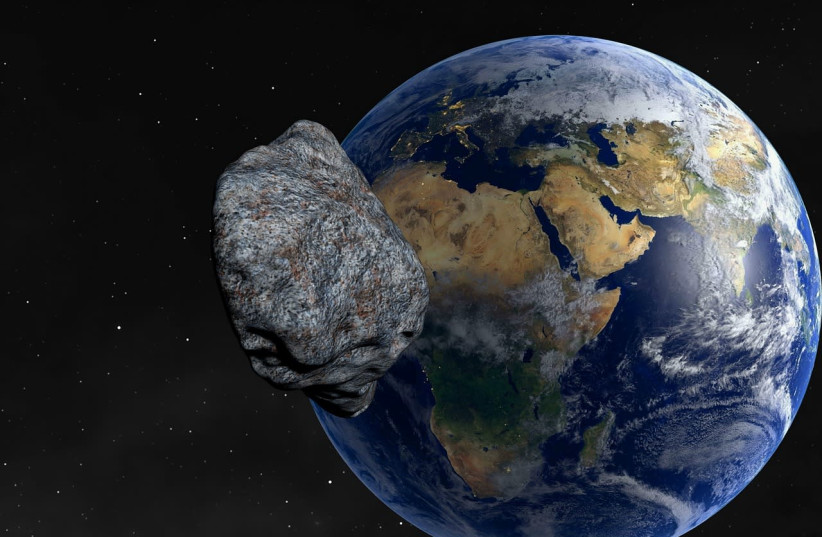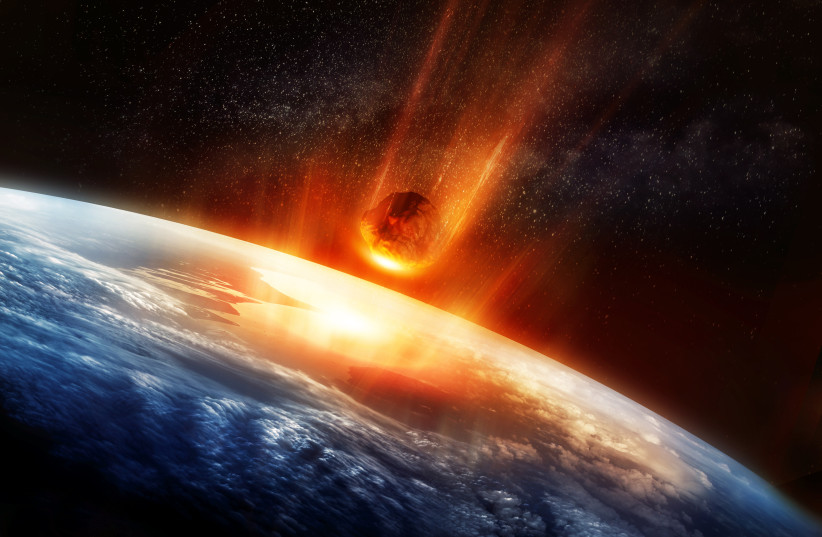Asteroid longer than 4 blue whales to fly past Earth on April Fool's Day
Designated 2007 FF1, this asteroid has an estimated size ranging between 120 meters to 260 meters and will pass by the planet on April Fool's Day. Yes, really.

A large asteroid that is a minimum of four times the size of a blue whale (17.5 male giraffes) is set to pass by Earth on April Fool's Day, according to NASA's asteroid tracker.
Yes, really.
Designated 2007 FF1, this asteroid has an estimated size ranging between 120 meters to 260 meters. The maximum length of a blue whale, the largest animal species thought to ever exist on Earth, is thought to be just under 30 meters. If looking for a non-cetacean comparison, the Great Pyramid of Giza in Egypt is just 130 meters in height.
Traveling at a speed of around 12.83 kilometers per second, the massive space rock is set to pass the planet at a distance of around 7.4 million kilometers. For comparison, the Moon orbits the Earth at a distance of around 384,000 kilometers, so it may not seem close. However, on a cosmic scale, this is closer than one might think, and NASA has even classified it as a Potentially Hazardous Asteroid (PHA).
This itself makes sense considering what could happen should 2007 FF1 actually hit us.
Asteroid (illustrative) (credit: SHUTTERSTOCK)
The possible damage of an asteroid
Asteroids are potentially one of the most dangerous natural disasters that could ever possibly happen. This is because not only do they hold the potential to cause catastrophic devastation, but there is also currently no immediate way to stop them.
According to research from the Davidson Institute of Science, the educational arm of Israel's Weizmann Institute of Science, an asteroid over 140 meters in diameter would release an amount of energy at least a thousand times greater than that released by the first atomic bomb if it impacted Earth.
Something even larger – over 300 meters wide like the asteroid Apophis – could destroy an entire continent. An asteroid over a kilometer in width – like 138971 (2001 CB21), which flew past the Earth in early March – could trigger a worldwide cataclysm.
Luckily, that isn't going to happen with 2007 FF1, especially since NASA calculated that Earth was free of risk from major asteroid impacts for the next century.
But it will still fly past us, and we've literally seen it coming.
Pictures of 2007 FF1 were taken by the Virtual Telescope Project on March 24. Shared online this blurry photo depicts the asteroid at a distance of around 11.6 million kilometers away from the planet. Further, as an Apollo-class asteroid, we know 2007 FF1's orbit around the Sun crosses Earth's own orbit.
Thankfully an impact won't happen, especially since Earth just had one weeks ago when 2022 EB5 hit the Earth's atmosphere just two hours after its discovery.
Luckily, however, this asteroid was very small, just about half the size of an average male giraffe, so it didn't cause any damage.
THIS PAGE WAS POSTED BY SPUTNIK ONE OF THE SPUTNIKS ORBIT BLOG


No comments:
Post a Comment
Stick to the subject, NO religion, or Party politics